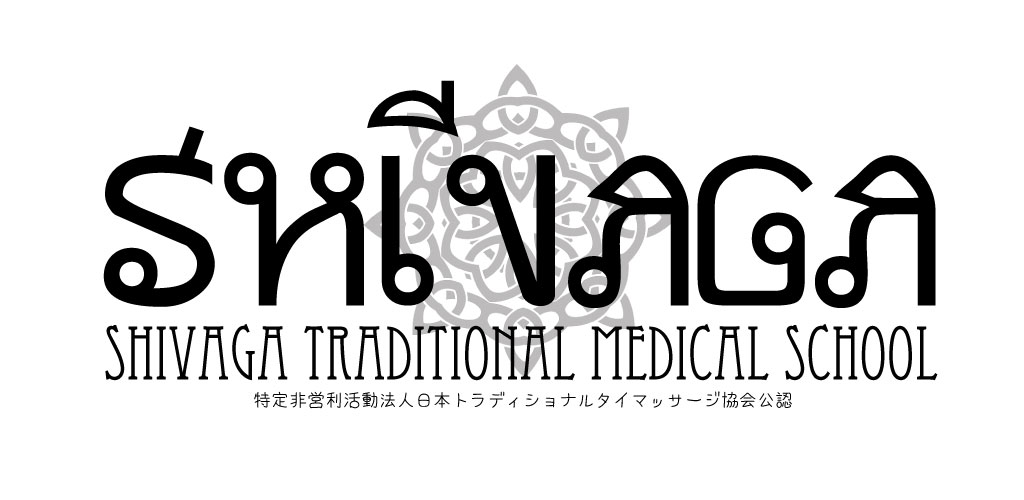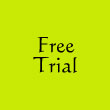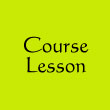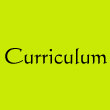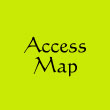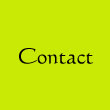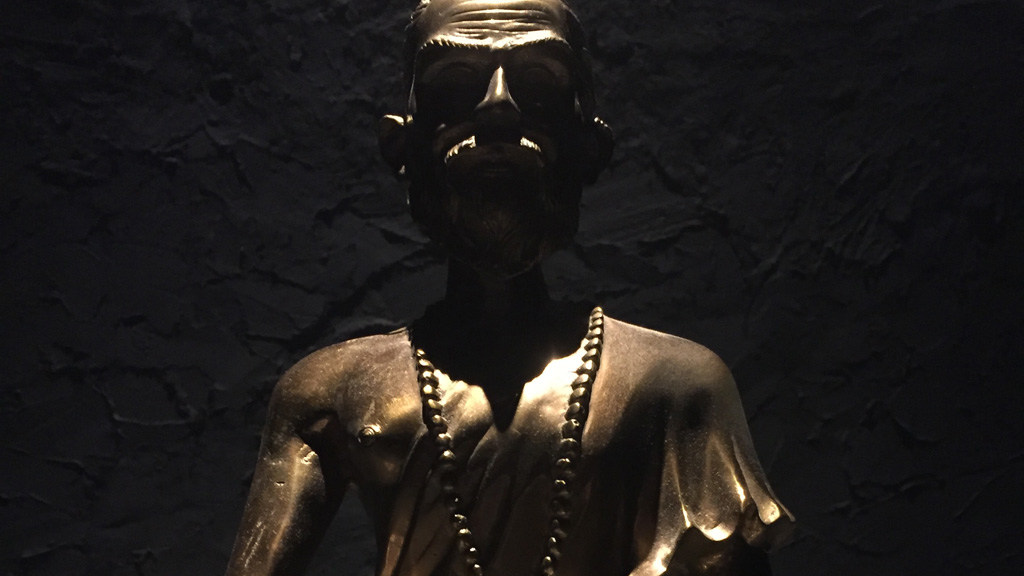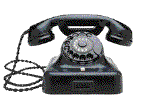| |
TRADITIONAL MEDICINE |
|
| |
伝統医学理論 |
|
| |
|
|
| |
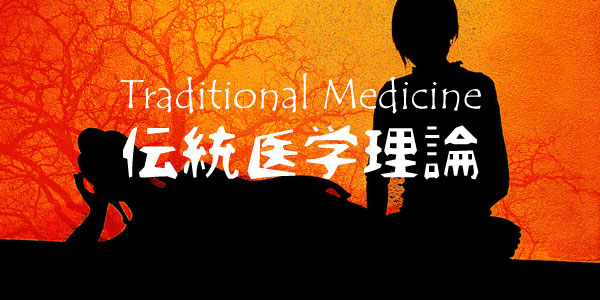 |
|
| |
|
|
| |
Traditional oriental medicine does not examine, repair or replace body parts as it does in western medicine. We will examine at the cellular level, not at the parts level. Bones, muscles, and internal organs are all made up of cells. If the three elements of "ki", "blood", and "water" circulate in one cell, that cell will be healthy. And the idea is that the body, which is a collection of cells, naturally becomes healthy.
"Ki" is life energy, "blood" is blood that carries nutrients and oxygen, and "water" is body fluid such as tears, runny nose, and lymph. Blood is pumped from the heart, which is a pump, and gradually becomes thinner from the aorta to the arteries to the capillaries. It looks like this when enlarged and imaged. The aorta is a strong, unbreakable blood vessel like the hose of a fire engine. Arteries are like watering hoses in the garden. And think of the capillaries as gauze that oozes out when pressure is applied. Since the capillaries are in the muscles, pressing the muscles sends blood to the veins, and releasing the pressure sends new blood into the muscles. This mechanism is exactly the pressure of massage.
"Water" mainly considers lymph, but the lymph vessels are stretched about 5 mm below the skin of the whole body. Rubbing or rubbing with lymph drainage or oil massage is an act that promotes the circulation of body fluids such as lymph. It is "Ki" that is difficult to understand. Even though it is called life energy, it is an invisible existence, so there is a part that makes me feel uncomfortable. "Ki" is referred to as "prana" in Thai traditional medicine and yoga, but in any case, the fact that this life energy exists in all ancient traditional medicines around the world such as China, India, and Thailand. It is a theory that is based on. |
|
| |
|
|
| |
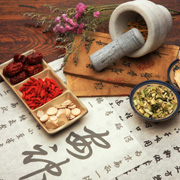 |
◆Fusion of traditional medicine and classical medicine
At "Kamakura Gokurakuji W Yoga Massage Lesson Studio", we practice massages and various treatments that were nothing more than relaxation as a comprehensive treatment method. This originated from the fact that the theory of traditional Thai medicine alone felt the limits of clinical treatment, but unfortunately there is no literature on traditional Thai medicine, so Indian medicine, which is said to have been originally influenced. We have also conducted research on traditional Chinese medicine. However, it was also true that all classical medicine had many mysteries and unclear points. For example, Indian medicine, which is the origin of Thai medicine, has a different energy path. "Nadi" in yoga is an energy line. This is equivalent to the traditional Thai medicine "Sen", but the "Sumana" that passes through the center of the body matches, but the path of "Pinkara" and "Itta" that run to the left and right is not at a different level, but Sumana. It exists as an axis that rotates clockwise around the center of the body and spirals counterclockwise. You can see that the way of thinking is completely different. In oriental medicine, there are meridians that are the paths of acupuncture points, but compared to "Sen", the paths of energy lines match about 80%. Therefore, by comparing and analyzing the paths of 12 regular meridians, 8 odd meridians, and "Sen", the meaning of each energy line can be deeply clarified and applied to a concrete approach. .. "Kamakura Gokurakuji Double Yoga Massage Lesson Studio" will try a scientific approach as a research institution of TTMA using many traditional medicine, classical medicine, and oriental medicine centering on Thai traditional medicine. We hope that many therapists and masseurs will be able to improve their clients' physical condition and that many will be able to regain their health and smiles. |
|
|
| |
|
|
| |
|
|
| |
|
|
| |
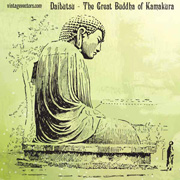 |
◆Attempt to verify traditional medicine
Traditional medicine is a classical medicine that has been practiced since ancient times, and in modern times, traditional medicine has come to be recognized as preventive medicine and alternative medicine to prevent illness. In less than 100 years, the rapid development of Western medicine has made traditional medicine perceived as ugly, and has been overshadowed. However, since around 2000 AD, the movement to review these has become stronger worldwide, and traditional medicine is still being reviewed at an accelerating pace. In the past, the country did not exist in the era of the group male division, but classical medicine existed around India today, around China now, and around Thailand now. They are still called Indian medicine and Chinese medicine, but Thai medicine is known to be influenced by these two. These traditional medicines have evolved into different forms over time, depending on the climate, climate, local customs and ethnicity. And, in modern times, each of them exists independently, and there is no movement to integrate them. In any case, these are crystals of human wisdom, and throwing them away without verification because they are old may be the same as throwing away human property. I will verify this later before I regret it. Modern medicine (Western medicine) is also not perfect. The treatment method is constantly changing, and the common sense of the past is being rewritten one after another. For example, in the past, if you got burned, you shouldn't cool it. However, in modern times, it is said to be chilled immediately. Nowadays, anyone can send information. There is a flood of lies and mischievous information on the internet. TTMA (Non-Profit Organization Japan Traditional Thai Massage Association) has been active as an industry group to popularize Thai traditional massage since 2000. Not a little, we did not provide sloppy information. That is why I felt that it was our mission to examine traditional medicine and convey it to many people. This attempt to verify traditional medicine is not good or bad in which country the traditional medicine was introduced to, but it is best to verify whether this is really effective or not for us who are trying to make use of it. I think it is important. |
|
|
| |
|
|
| |
|
|
| |
|
|
| |
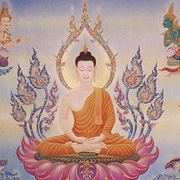 |
◆Basics of Thai traditional medicine
Thai massage has become a prominent and famous treatment, but Thai massage is one of the traditional Thai medicines, not "Thai massage = Thai traditional medicine". As far as the contents are concerned, Thai traditional medicine is a unique classical medical theory and is strongly influenced by the ancient Indian medicine Ayurveda.
◇ Causes of illness in Thai traditional medicine
1. Somut Turn (a component of the universe in Thai traditional medicine)
2. Utu Somut Turn (season, climate)
3, Ayu Somut Turn (age)
4, Platate Somut Turn (land)
5, Ghan Somut Turn (time)
6. Roke Gut (lifestyle)
◇ "Tart" and "Somut Turn", which are the components of the universe in Thai traditional medicine
Thai traditional massage is strongly influenced by the ancient Indian medicine Ayurveda. In Ayurveda, the components of the universe are divided into five (sky, wind, fire, water, soil), while in Thai traditional medicine, they are classified into four (soil, water, wind, fire). increase. And since the universe and the human body are not separated from each other, but are based on the recognition that they are in a relative relationship, it is thought that the human body is also made up of four elements. These four major elements are called tart or somut turn. "Soil" constitutes 20 organs of the body, "water" produces 12 liquids flowing through the body, "wind" weaves 6 movements of the body, and "fire" produces 4 heats of the body. It is believed to generate. When these four elements are in good balance, the body functions normally. In addition, only one of these four elements stands out, and this is called "Jaoruan". "Jaoruan" is determined when the mother is in the womb, and is usually said to remain unchanged until the age of six. It may change depending on how you grow up, your environment, and your eating habits. It is thought that the imbalance between these causes illness, and each person is divided into different constitutions so that each person has a different personality and nature. It's a good idea to know your own constitution.
1, Tart Din
It is an element of "soil" that has the property of returning to the soil when burned.
・ 20 organs composed of "soil"
Hair, hair, nails, teeth, skin, muscles, ligaments, bones, bone marrow, spleen, heart, liver, fascia, kidneys, lungs, large intestine, small intestine
New food, old food, brain, spinal cord
・ When Jaoruan is "soil"
The physique is large, the skin is a little black, and the hair is a lot black. The voice is loud and well passed, and the bones are strong and thick. Heavier, fat and sturdy, and each organ is healthy.
2, Tart Naam
It is an element of "water" that has the property of flowing and penetrating.
・ 12 liquids composed of "water"
Blood, sweat, bile, sputum, pus, tears, lymph, fat, saliva, urine, runny nose, synovial fluid
・ When Jaoruan is "water"
The body and organs of the body are healthy, well-styled, and the skin is firm and bright. Her eyes are clean, she has a lot of tears, and she has a good balance of walking. Hair is beautiful and abundant. Eat and act slowly and endure hunger, cold and heat. The voice goes well, the sexual desire is strong, and there are many children. There is a passive and lazy part.
3, Tart Rom
It refers to something with a light property that can move with the element of "wind".
・ Six actions made up of "wind"
Head-to-foot wind (movement), foot-to-head wind (movement), abdominal wind (movement), stomach and intestinal wind (movement), blood wind (movement), breathing wind (movement) )
・ When Jaoruan is "wind"
Dry skin, easy to dry, and thin. Hair is thin and joints make noise when moved. He is timid and jealous. easy to heat up, easy to cool down. Sensitive to the cold and prone to sleeplessness. Talkative but low voice and unclear. The lust is pale and there are few children.
4, Tart Phi
It is an element of "fire" that has the property of burning to generate heat.
・ Four heats that "fire" constitutes
Body temperature fire (heat), high fever fire (heat), aging fire (heat), digestion fire (heat)
・ When Jaoruan is "fire"
Hair, body hair, and beard are soft and tend to turn gray at a young age. I am hungry and have a strong appetite. Sensitive to heat, patience and impatient. The joints are not tight, and bad breath and body odor are strong. Moderate libido.
◇ "Utu Somut Turn" where seasons and climate cause illness
When the seasons change, the temperature, humidity, wind, atmospheric pressure, etc. change, and the human body must adapt to the environment. However, if you do not adapt well, you will lose your balance and get sick. Especially at the turn of the season, it is easy to lose balance. The season is called "Rudou", but each year is divided into three parts, and each Rudou has its own characteristics.
1. Kimha Rudu (late April to early August)
In Kimha Rudu, which means summer, Somut Turn keeps up with the hot climate. Although my body is accustomed to being hot, I sometimes feel cold due to rain. At such times, "fire" (Tart Phi) is the basic cause of illness.
2. Wassan Rudou (late August-early December)
In Wassan Rudu, which means the rainy season, Somut Turn keeps the body by responding to humidity. Even in high humidity, the heat and cold can occasionally mix. At such times, the "wind" (Tart Rom) is the basic cause of illness.
3. Heman Ludo (late December-early April)
In Heman Rudu, which means winter, Somut Turn keeps the body in the cold. You may feel hot or cold during this time. In such cases, "water" (Tart Naam) is the basic cause of illness.
◇ "Ayu Somut Turn" where age causes illness
At Ayu Somut Turn, we divide human age into three parts.
1. Patom Wai (0-16 years old)
In childhood, "water" (Tart Naam) is the basic cause of illness.
2. Matchma Wai (16-32 years old)
In the middle of life, "fire" (Tart Phi) is the basic cause of illness.
3. Patchum Wai (32 years old and above)
In old age, "wind" (Tart Rom) is the basic cause of illness.
◇ Platate Somut Turn where the place of residence and climate cause illness
The idea is that people are influenced by the land they were born in. Since there are somut turns that are familiar to each climate, living in a different environment, such as when moving, can cause illness.
1. Patom Wai (0-16 years old)
In childhood, "water" (Tart Naam) is the basic cause of illness.
2. Platet Eun (meaning warm land)
For people born in places with sandy water, "water" (Tart Naam) is the basic cause of illness.
3. Platate Yen (meaning cool land)
For people born in wetlands with a lot of rain, "wind" (Tart Rom) is the basic cause of illness.
4, Platate Now (meaning cold land)
For people born in wetlands near the seaside, the "earth" (Tart Din) is the basic cause of illness.
◇ "Garn Somut Turn" that causes illness caused by time
It is characterized by illnesses that also occur depending on the time of day. It is believed that this is due to the changing somut turns of the body.
"Water" that increases from 1:00 to 10:00 and from 18:00 to 22:00 (Tart Naam)
Runny nose, diarrhea, etc.
"Fire" that increases from 2:00 to 14:00 and from 22:00 to 2:00 (Tart Phi)
Fever, abdominal pain, etc.
"Wind" (Tart Rom) that increases from 3:00 to 18:00 and from 2:00 to 6:00
Dizziness, fatigue, fatigue, etc. |
|
|
| |
|
|
| |
|
|
| |
|
|
| |
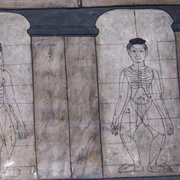 |
◆Elucidation of energy line "Sen" by meridians
The energy line "Sen" that flows through the body used in Thai traditional medicine is a meridian. Both are energy paths, passing through the center of the body, or as far as Senkichana is concerned, deep into the abdomen and genitals, and the "Sen" does not run on the surface of the body. understand.
According to some sites, I have seen the comment that "" Sen "can be confirmed by touching it with a finger", but if it can be touched by hand, it will become clear if it is dissected. Even in modern times, there are multiple views and it is not clear because this is the path of energy and even if it is dissected, such an organ does not appear. Even in Thai traditional medicine, according to the literature, the path of Sen is slightly different depending on the times, so it is a little confusing. Perhaps the muscles, tendons, nerves, etc. that were "touched" on the net.
Traditional Thai massage originally requires at least 2 hours. That is because we approach the energy lines of the whole body. Recently, even in Thailand, a 60-minute Thai massage is listed as a menu for tourists, but in that sense it is a sub-class. Thai massage is an approach to the whole body, not a part, so it is not a part. However, this means that no matter what the client's physical condition is, the exact same procedure should be performed.
When learning Thai massage, the procedure is fixed, so the actual energy line name does not usually appear, such as the expression for Sen as the first line and the second line. However, in order to improve the physical condition of the client and alleviate the symptoms, it is very important to know the meaning of each energy line. It is a point that we would like not only therapists but also those who are active as bodywork therapists to deepen their insights.
■Sen Summana (Sen Summana)
[Line path] (Center) Tongue tip-throat-chest-epigastrium
[Sen indication symptoms] Asthma, bronchitis, chest pain, nausea, cold, cough, throat disease, abdominal pain, manic disease, heart disease, diaphragmatic spasm, upper body paralysis, digestive system disease, daylight dream, etc.
[Explanation by meridians] In the light of Oriental medicine, only a part of the front side of the body in the air (Ren Meridian to Du Meridian) passes through the eight odd meridian veins. The Ren Meridian begins in the pelvis, passes through the center of the abdomen, passes through the abdomen, chest, and neck, and extends to the center of the lower lip. This line is the line that adjusts the balance of Ki and blood, and is the line that approaches when Ki is fruitful (too much) or empty (too little). By the way, it is an energy line that exactly overlaps with "Sushmunadi" in yoga, and this is the most important energy line known as the central consciousness path. It is also the intersection of Nadi, a storage of energy, and physically corresponds to the spine, blood vessels, and nerves. The physical and mental bodies are strongly connected by an energy center called Chukura, but the chakras are also present on this Sushumnadira, which is also an effective line for balancing the body.
■Sen Ittha (Sen Ittha) ・・・Opposite side of Sen Pingkhala
[Line path] (Left) Left nostril-top of head-neck-back 1st line-buttocks-outer leg 3rd line-knee-inner leg 1st line-abdomen-navel left side point
[Sen indication symptoms] Nose discomfort, sinusitis, headache, stiff neck, back pain, cold, knee pain, poor swelling, urinary organ disease, abdominal pain, etc.
[Explanation by meridians] Water (stomach and bladder)
Tree (liver / biliary) Gold (lung / colon)
■Sen Pingkhala (Sen Pingkhala)・・・The other side of Sen Ittha
[Line path] (Right) Right nostril-top of head-neck-back 1st line-buttocks-outer leg 3rd line-knee-inner leg 1st line-abdomen-navel right side point
[Sen indication symptoms] Nose discomfort, sinusitis, headache, stiff neck, back pain, cold, knee pain, poverty swelling, urinary organ disease, abdominal pain, and liver disease, cholecystic disease, etc.
[Explanation by meridians] Water (stomach / bladder) Tree (liver / biliary) Gold (lung / colon)
■Sen kalayhari (Sen kalayhari)
[Line path] (Left) Left eye-throat-chest left side-abdomen left side-leg lateral 1st line-sole-leg medial 1st line-inner meridian-navel bottom point
[Sen indication symptoms] Facial paralysis, toothache, throat pain, red eye, swelling of eyes, cataracts, eye dysfunction, chest pain, gastrointestinal disease, urinary system disease, fever, paralysis of legs, numbness of legs, Knee joint pain, hernia, etc.
[Explanation by meridians] Soil (spleen and stomach)
■Sen Sahatsarangsi (Sen Sahatsarangsi)・・・Opposite side of Sen Thawari
[Line path] (Left) Left eye-throat-chest left side-abdomen left side-leg lateral 1st line-sole-leg medial 1st line-inner meridian-navel bottom point
[Sen indication symptoms] Facial paralysis, toothache, throat pain, red eye, swelling of eyes, cataracts, eye dysfunction, chest pain, gastrointestinal disease, urinary system disease, fever, paralysis of legs, numbness of legs, Knee joint pain, hernia, etc.
[Explanation by meridians] Soil (spleen and stomach)
■Sen Thawari (Sen Thawari) ・・・Opposite side of Sen Sahatsarangsi
[Line path] (Right) Right eye-throat-chest right side-abdomen right side-leg lateral 1st line-sole-leg medial 1st line-inner meridian-navel bottom point
[Sen indication symptoms] Facial paralysis, toothache, throat pain, red eye, swelling of eyes, cataracts, eye dysfunction, chest pain, gastrointestinal disease, urinary system disease, fever, paralysis of legs, numbness of legs, Knee joint pain, hernia and jaundice, pyorrhea, etc.
[Explanation by meridians] Soil (spleen and stomach)
■Sen Lawusang (Sen Lawusang)・・・Opposite side of Sen Uragka
[Line path] (Left) Left ear-Left side of throat-Left side of chest-Left side of nipple-Epigastrium
[Sen indication symptoms] Ear diseases, deafness, tinnitus, cough, facial paralysis, toothache, chest pain, gastrointestinal disorders, etc.
[Explanation by meridians]
■Sen Uragka (Sen Uragka) ・・・Opposite side of Sen Lawusang
[Line path] (Right) Right ear-Right side of throat-Right side of chest-Right side of nipple-Epigastrium
[Sen indication symptoms] Ear diseases, hearing loss, tinnitus, cough, facial paralysis, toothache, chest pain, gastrointestinal disorders and insomnia, itching under the skin, etc.
[Explanation by meridians]
■Sen Nathakrawat (Sen Nathakrawat)
[Sen indication symptoms] Hernia, pollakiuria, infertility, irregular physiology, sexual dysfunction, premature ejaculation, urinary retention, diarrhea, abdominal pain, etc.
[Explanation by meridian] From the navel to the perineum, it overlaps with the front side of the body in the air (Ren Meridian to Du Meridian) among the eight odd meridian veins like Sense Mana. One of the mysteries of Thai traditional medicine, the testicle massage "Japkasai" and the female version "Yoktone" are approaches to this line.
◇ Sen Sikhini
[Line path] Navel-urethra-urethral meatus
◇ Sen Sukhumang
[Line path] Navel-colon-anus
■Sen Khitchanna (Sen Khitchanna)
[Sen indication symptoms] Hernia, pollakiuria, infertility, irregular physiology, sexual impotence, premature ejaculation, urinary retention, diarrhea, abdominal pain and stable sexual impulses
[Explanation by meridians]
◇ Sen Pitakun
[Line path] (Male) Navel-Penis
◇ Sen Kitcha
[Line path] (Female) Navel-uterus-vagina |
|
|
| |
|
|
| |
|
|
| |
|
|
| |
 |
◆ Basics of oriental medicine
Even in oriental medicine, it is thought that the essence of the activity of the human body is not the organs, the five viscera and the six organs, but the ones that flow through them. Organs, digestive organs, and skeletons are nothing more than containers, and the "Qi" and "blood" that flow through them are important. In Chinese medicine, there is a "path" that flows through the whole body in the same way as "Sen". "Route" is the route through which "Qi" and "blood" flow, and the twelve veins are named after the role and organs of the body, such as the lung channel and spleen channel. "Ki" is the energy of energy, the energy of energy, and the invisible energy that moves the body. "Blood" is a nutrient that nourishes the body and at the same time plays a role in carrying nutrients. It has a much broader meaning than blood in Western medicine. "Water" moisturizes the body, "Ki-Blood" warms the body, but "Water" plays a role of cooling the body. Acupuncture points are points on the route, and if the route is likened to a train line, the acupuncture points are stations.
Oriental medicine is a traditional medicine that aims to maintain health and improve illness by drawing out the natural healing power. In oriental medicine, human beings are regarded as one of nature (the universe) and are influenced by the natural world. And I think that the same principles and rules can explain the physiology, pathology, and outbreak of diseases of the human body (microcosm). In Western medicine, tissues and organs are considered to be different independently, but in Oriental medicine, they are regarded as one nature (living body) that has different functions but is connected to each other as a whole.
We believe that the mind and body are one, and that various functions of the human body are performed by the close relationship between the mind and body. Emphasis is placed on mental state (emotion) as the cause of illness, and at the same time, physical abnormalities affect mental activity. We comprehensively (overall) grasp the causes, symptoms, constitution, mental state, etc. of illness, and treat with emphasis on systemic adjustment. From this, it is said that oriental medicine "sees the sick rather than sick, cures the sick rather than cures the illness."
Oriental medicine's ideal is to "cure pre-illness". Pre-illness refers to a semi-healthy condition, and if left untreated, it will develop into a full-fledged illness based on organic lesions. "Curing a pre-illness" means restoring a semi-healthy state to a healthy level, which is equivalent to preventive medicine, which is regarded as important in modern times.
Western medicine and oriental medicine have fundamentally different ways of thinking and understanding about illness, so naturally the way of thinking about treatment also differs. In oriental medicine, all diseases and symptoms are linked to yin and yang and meridians. |
|
|
| |
|
|
| |
|
|
| |
|
|
| |
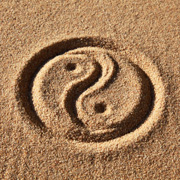 |
◆ Yin and Yang theory
The theory of yin and yang is the idea of trying to grasp all substances and phenomena in this world by dividing them into yin and yang. It is said that the beginning is China around 1000 BC. It is said that it evolved from the idea of Ayurveda, which originated in India, and there is a similar part to the idea of Ayurveda.
This philosophy is the basis of oriental medicine and many diets and traditional medicines. It also exists in the history of Western medicine. The Yin-Yang theory is closely related to aromatherapy, medical herbs, other natural remedies and alternative medicine. Knowing this theory makes it easier to understand the workings of plants and nature and expands the world. The stronger the yin and yang, the weaker the other. When the shade becomes extremely strong, the yang appears, and when the yang becomes extremely strong, the shade appears. The idea is that yin and yang are always interacting, circulating and maintaining balance.
陽 天 太陽 火 晴天 男 春夏 昼 上 外 表 上半身 背 四肢 気 血 陽経脈 経絡 腑 心 肺 胃
陰 地 月 水 雨天 女 秋冬 夜 下 内 裏 下半身 腹 身幹 血 津液 陰経脈 臓腑 臓 腎 肝 脾 |
|
|
| |
|
|
| |
|
|
| |
|
|
| |
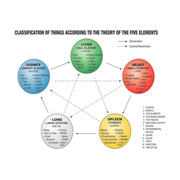 |
◆ Qi / Blood / Tsuju
In oriental medicine, the idea is that if each cell becomes healthy, everything will improve. Cells will be healthy if the three elements of "Qi, blood, and tsuju" are carried there. "Qi, blood, and water" go around the whole body while balancing each other, and if any of them is insufficient or the circulation is delayed, physical disorders will occur.
・ "False"
A type that lacks energy, such as being easily tired and tired, sweating easily, diarrhea easily, and limbs chilling easily. Consciously eat foods that supplement your energy and warm your body. Recommended ingredients are eel carrots, natsume, pumpkin, cabbage, yam, potatoes, sweet potatoes, shiitake mushrooms, strawberries, cherries, grapes, eels, bonito, hydrangea, chicken, milk.
・ "Qi"
A type in which the flow of energy is stagnant. It's easy to get frustrated and angry, sigh well, belch easily, feel like it's stuck in your chest or throat, and get sick before menstruation. Try to eat an unbiased diet and use flavored vegetables and herbs. Recommended ingredients are celery, shungiku, ginger, nira, chrysanthemum, shiso, myoga, mitsuba, yuzu, parsley, grapefruit, jasmine tea, mint tea, yuzu tea.
・ "Blood emptiness"
I often dream, my eyes get tired easily, my stools are rolling, my skin and hair are easy to dry, etc. A type that lacks "blood" to feed the body. In addition to black and red ingredients, try to have a well-balanced diet by incorporating meat dishes. Recommended ingredients are Natsume, black kikurage, black sesame, walnuts, pine nuts, black rice, hijiki, spinach, carrots, ichijiku, grapes, oysters, liver, lean meat, lamb, milk, eggs.
・ "Dirty blood"
A type that has a dark complexion, is worried about dullness, is prone to rough skin, has severe menstrual pain, is prone to bruising, etc. Eat a meal that warms your body and improves blood circulation, such as spicy vegetables that improve blood circulation. Recommended ingredients are red flowers (* forbidden to pregnant women), black vinegar, vinegar, red pepper, sanzashi, azuki, black beans, peppers, peppers, chingensai, spinach, onions, garlic, garlic, rakkyo, blueberries, thighs, and vinegar. Garlic, vinegar, black vinegar |
|
|
| |
|
|
| |
|
|
| |
|
|
| |
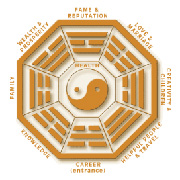 |
◆Five elements theory
The theory of five elements is a development of the theory of yin and yang, and is an idea that classifies things in the natural world into five elements. All things are divided into five elements: water, wood, fire, earth, and gold, and they influence each other to form the universe. These five are similar to the five major elements of Ayurveda (sky, wind, fire, water, earth), but with a slightly different idea. Whereas the five Ayurvedic elements represent the properties of all things, the five properties of the Five Elements theory are concepts such as natural energy and dynamic forces.
The five elements influence each other. The nature of the neighbors is a reciprocal relationship, and the nature of facing each other is a competing relationship to adjust. In Aioi relations, it starts with "water". A "tree" grows by sucking water. "Fire" gains momentum with trees, and the burning ash becomes a nutrient for "soil". Nutrients solidify in the soil and produce "gold". The metal melts and returns to "water".
In a conflicting relationship, the opposite nature is a restraining and coordinating relationship. "Water" has the power to extinguish "fire" and adjusts the momentum. The "tree" sucks the nutrients of the "soil" or roots and adjusts the momentum. "Fire" is suppressed by melting "gold", and "soil" stops the flow of "water". "Gold" cuts off "tree" and suppresses it.
In this way, the relationship of gaining momentum and the relationship of coordinating are well combined to create a balance in the natural world. It is believed that we can live smoothly by living along this balance.
The concept that expresses the function of the body of the five elements is called the five organs. There are five types of kidney, liver, heart, spleen, and spleen, each of which corresponds to the five elements of water, wood, fire, soil, and gold. It has a broader meaning than the kidney, liver, heart, etc. in Western medicine. The idea is that when our body's "water" energy is upset, the corresponding "kidney" function declines. There is also the concept of five internal organs (six internal organs) together with the five viscera, and there is a internal organs corresponding to the five viscera.
The elements of the five elements theory begin with "water". It is the source of life. In terms of plants, it is the time of seeds. It is the most essential energy and stores the energy to live inside like seeds. At first glance, it seems to have stopped, but it has high vitality, potential, and potential inside. From there, it develops and is associated with growth function and aging. It is also related to moisturizing, flowing from top to bottom, and cooling. It is a stable "shadow", the season is "winter" and the time is "night". Since the main purpose is to survive, the function of the body is related to reproduction and mental aspiration. "Water" extinguishes the fire, so adjust the "fire". It also nourishes the "tree" and is suppressed by the "soil". The five viscera correspond to the "kidney" and the five gods correspond to the "will".
The second element of the five elements is "tree". From the time of "water" seeds, it is time to grow and accelerate. It is also the time when the direction is set. In terms of plants, it is the time of sprout. The season is "spring" and the time is "morning". In life, it involves being motivated, growing, and adapting to others. The tree bends but grows up. Therefore, we refuse to be bound or free. In terms of body function, it also helps to send nutrients throughout the body and to move smoothly. "Tree" suppresses "soil" because it absorbs the nutrients of the soil. It is also adjusted to "gold" and helps "fire". The five viscera correspond to the "liver" and the five gods correspond to the "soul".
The third element of the five elements is "fire". From the time of "water" seeds, the time of "trees" that grow and accelerate has passed, and the time of further expansion and momentum is "fire". In terms of plants, it is the time when flowers bloom. The season is "summer" and the time is "noon". In life, it's time to embody a oriented path. Therefore, "fire" is deeply related to identity. Find something that you are truly truly satisfied with. "Fire" suppresses "gold" because it melts metal. It is also adjusted to "water" and helps "soil". The five viscera correspond to the "heart" and the five gods correspond to the "god".
The fourth element of the five elements is "earth". From the time of "water" seeds to the time of growing "trees", and after the momentum and passion of "fire", they become the "soil" that takes shape. "Soil" is the energy that embodies, forms, and transforms. It also works to maintain it. In terms of plants, it is the time when the fruits come to fruition. The season is "long summer" and the time is "afternoon". Psychologically, it is related to learning and thinking, and physically, it is involved in the muscles that shape the body and the function of transforming and absorbing nutrition. "Soil" suppresses "water". It is also adjusted to "tree" and helps "gold". The five viscera correspond to the "spleen" and the five gods correspond to the "will".
The fifth element of the five elements is "gold". It is the time to purify and give order to what was embodied in the period up to the "soil" so that gold can be made by condensing and purifying the soil. It is also the time of introspection. It is also a place of exchange that takes in pure energy from the outside and releases the dirty energy in the body. Therefore, it has something to do with the skin, which is the boundary line with the outside world. Psychologically, the theme is the distance between the individual and the surroundings. In terms of plants, "gold" is a leaf that acts as a respiratory organ. The season is "autumn" and the time is "evening". "Gold" suppresses "trees". It is also adjusted to "fire" and helps "water". The five viscera correspond to "lungs" and the five gods correspond to "white".
A so-called "acupuncture point" that feels good when you press it when you feel it is stiff. It is often thought of as a folk remedy, but it is one of the Kampo medicines whose medical benefits are correctly recognized worldwide. In the world of oriental medicine, acupuncture points are correctly called "acupuncture points". The "acupuncture point", which is the true identity of the "pot", is a relay point for the "meridian", which is considered to be the path through which energy passes inside and outside the body, and is said to be the place where energy is poured. increase. According to the WHO definition, the number of acupoints on the whole body is 361. In particular, it is said to be abundant between muscles, between muscles and tendons, between muscles and bones, and in the bulging parts of joints.
A meridian is a line that connects "acupuncture points", but this is a path through which the air flows. The meridians are the energy lines that connect to the internal organs. In oriental medicine, the idea is that if the five viscera and six halves are healthy, the whole body will be healthy. There are two types of meridians, the "Twelve Standard Meridians" and the "Twelve Standard Meridians", which are the paths of energy.
In meridian therapy, we examine the symptoms of each of the following energy lines from the client's symptoms, and take an approach to alleviate the symptoms for each client.
Mercury energy・・・Kidney minora / urinary bladder
Venus energy・・・Lung Channel / Large Intestine Channel
Earth energy・・・Pericardium Channel / Sanjiao Channel
Mars energy・・・Heart Channel / Small Intestine Channel
Jupiter energy・・・Liver Channel / Gallbladder Channel
Saturn energy・・・Spleen Channel / Stomach Channel
Cosmic energy・・・Ren Meridian / Du Meridian
If the function of each viscera deteriorates for some reason, the modulation of the part controlled by each viscera appears. The effect also appears as fluctuations in the meridians. In other words, the idea is to gradually affect everything from one cause, and if left alone, everything will get worse. |
|
|
| |
|
|
| |
|
|
| |
|
|
| |
|
|
|
